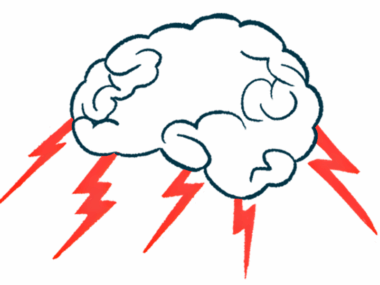New tech will allow less invasive monitoring of animal brain activity
Technology for use in monkeys aims to advance Parkinson's research, per study
Written by |

A team of South Korean scientists has created technology that can measure brain activity in monkeys without the need for wires or batteries that would interfere with the normal instincts of the animal — an advancement, according to the scientists, that may ultimately aid in research into neurological conditions such as Parkinson’s disease.
“We have developed a technology that can wirelessly measure brain neural signals in a natural state, allowing nonhuman primates to remain unaware of the neural signal recorder implanted in their brains,” Kyung-in Jang, PhD, coauthor of the study at Daegu Gyeongbuk Institute of Science and Technology, said in an institute press release.
“By refining this technology for universal application in preclinical and clinical trials, we hope to contribute to the treatment of various intractable brain diseases, including Parkinson’s disease and Alzheimer’s disease, which continue to pose significant challenges with current biomedical engineering technologies,” Jang said.
The advancement was described in “A stealthy neural recorder for the study of behaviour in primates,” a study published in the journal Nature Biomedical Engineering.
Wires, batteries traditionally needed for monitoring animal brain activity
Parkinson’s and other brain diseases are difficult for scientists and clinicians to understand comprehensively, in large part because the brain itself is so complex. Nonhuman primates (NHPs) such as monkeys, which have brain structures similar to humans, have proven invaluable model organisms to help scientists better understand how the brain works.
Technologies to monitor animal brain activity have traditionally relied on batteries or external devices that use wires to record signals inside the brain. Using these devices with monkeys, however, is inherently problematic because the animals will notice when they have wires strapped to them — making it likely their behavior will change simply because they are being monitored.
The fact that NHPs naturally adjust the height and angle of their heads is another challenge when using wires. Also, as most devices to record brain activity may use a rechargeable battery or some other short-range way of providing energy, they require the animal to move or be restrained to a charging station.
Now, researchers from the institute’s robotics and mechanical electronics department have developed a so-called stealthy neural recorder able to monitor monkey brain activity while being essentially unnoticeable to the animal itself. The device uses wireless capabilities to power itself and record electrical activity from deep within the monkey’s brain, then utilizes artificial intelligence (AI) to make sense of the recordings.
“The stealthy neural recorder surpasses the constraints of previously reported neural recording devices and offers an advanced integrated-device solution for the study of the innate [behavior] of primates in an uninhibited manner,” the researchers wrote.
In a proof-of-concept experiment, the researchers used their device to monitor the activity of a freely moving monkey for one month. The team tested how well the device could deduce when the monkey was eating food or snacks, a common normal behavior for a primate. The device was about 86% accurate at identifying eating behaviors.
The stealthy neural recorder surpasses the constraints of previously reported neural recording devices and offers an advanced integrated-device solution for the study of the innate [behavior] of primates in an uninhibited manner.
According to the scientists, having an accurate, minimally invasive way to measure brain activity in monkeys is a key step toward developing similar technology that could be used to study brain activity in humans.
“We believe that the neural interface opens up possibilities for extensive studies of complex neural circuitry in NHPs and for the study of human brain disorders,” the team wrote.
Jang is working to commercial the new technology through his faculty startup, according to the release.





